Dr. Claude Boyd on the interpretation of oxidation-reduction reaction in aquaculture ponds
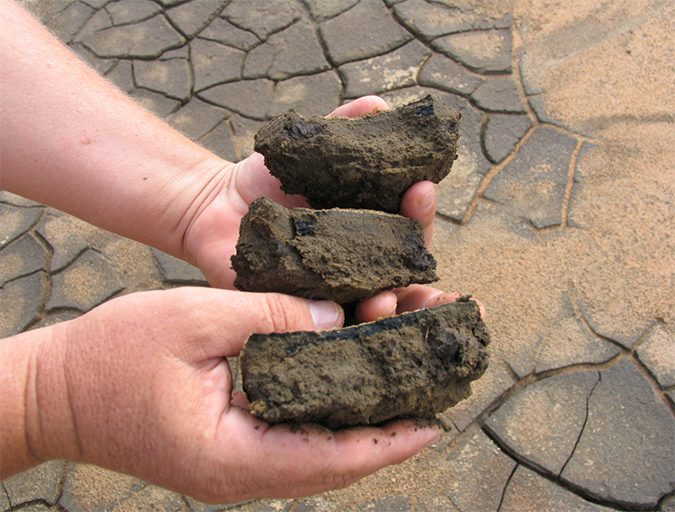
During the past few years, several aquaculturists have asked me about the use and significance of the oxidation-reduction potential – often referred to as ORP or redox potential. I have responded as follows: “Trust me, donate the redox probe to a chemist working in a laboratory, and use a dissolved oxygen (DO) meter and probe to make sure that your pond (or other culture system) maintains a satisfactory DO concentration at all times.”
My curt answer has seldom satisfied the inquirers. Moreover, my explanation of why redox measurements and their interpretation for aquaculture purposes were fraught with uncertainty seemed to be even less satisfying to them. Thus, I have decided that I should provide a simple explanation of the complex principles of redox measurement and its interpretation.
Oxidation-reduction reactions
Chemical reactions are driven by various mechanisms, but many reactions important in aquaculture production systems are oxidation-reduction reactions. In an oxidation reaction, a substance loses electrons and becomes more electropositive in valence, while the reverse occurs when a substance is reduced.
However, a substance cannot be oxidized unless there is another substance available to accept the resulting electrons. The converse is true for the reduction of a substance; there must be another substance to donate electrons to it. The electron donor is oxidized and becomes more electropositive, while the electron acceptor is reduced or becomes more electronegative.
The electron donor is called the reducing agent, and it is oxidized in the reaction. The electron acceptor is referred to as the oxidizing agent, and it is reduced in the reaction. The transfer of electrons between the two substances creates a detectable current (flow of electrons).
Redox potential explained
The redox potential, in theory, is measured as a flow of electrons from a standard concentration of one substance to or from a hydrogen electrode that is assigned an electrical potential of zero. The measured flow of electrons during an oxidation-reduction reaction is the redox potential; but, depending upon the substance being compared to the hydrogen electrode, the flow of electrons may be in either direction.
The usual procedure is to assign a positive value to the redox potential when electrons flow from the hydrogen electrode to the other substance. A positive value is assigned when the electrons flow from the other substance to the hydrogen electrode. The larger the numerical value of the redox, the more oxidized or reduced is the other substance with respect to the hydrogen electrode.
The redox potential is not an easy or reliable technique for assessing the suitability of water quality for aquacultured animals.
A high positive redox potential indicates that a substance is highly oxidized relative to the hydrogen electrode. A high negative redox potential means that a substance is highly reduced relative to the hydrogen electrode.
Tables of standard redox potentials relative to the hydrogen electrode for many substances are available in most general chemistry books. Of course, during the reaction between a substance and the hydrogen electrode, the redox potential progresses towards zero. A redox potential of zero occurs when the two substances are at equilibrium with each other with respect to electron flow.
The theoretical redox potential for a freshwater of pH 7 containing 8 mg/L DO and at 25 degrees-C, the redox potential is 0.802 volt. However, in practice, a mercurous chloride (calomel) electrode is used for practical redox measurements. A calomel electrode has a redox potential of 0.242 volt versus a hydrogen electrode, so the redox measured with a calomel electrode would be 0.560 volt. However, at 25 degrees-C and pH 7, the redox measured with a calomel electrode would be 0.547 volt even at 1 mg/L DO. Thus, as long as the water holds a small amount of DO, its redox potential is high.
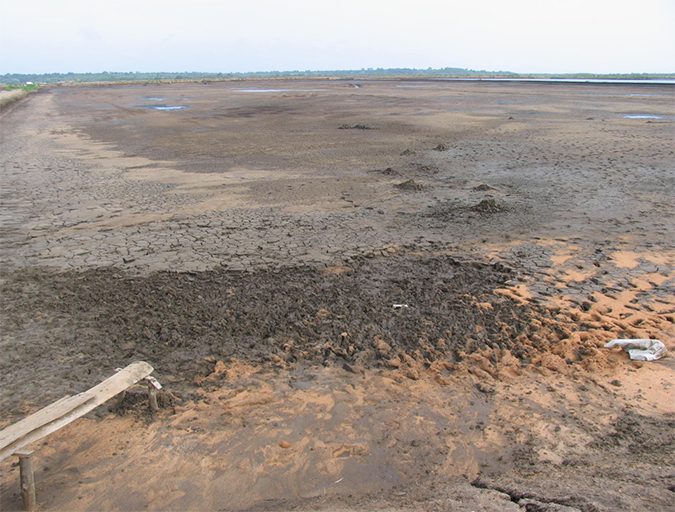
The pH has an effect on redox. To adjust a redox measurement to pH 7, 0.0592 volt per pH unit is subtracted from redox measured at lower pH or added for redox measured at higher pH. A temperature increase of 1 degree-C causes redox to increase by 0.0016 volt, but redox instruments usually have a “built-in” temperature compensator.
In a thermally stratified lake, redox may fall very low – even to negative values – when DO concentration falls to 0 mg/L in the deeper (hypolimnetic) water. However, in aquaculture ponds that normally do not stratify thermally, the redox potential usually will be above 0.50 volt at the sediment-water interface because DO is present. Redox quickly falls to 0.2 volt or less at a depth of a few millimeters into the sediment because of oxygen-depletion resulting from microbial activity. The redox potential also falls quickly in sediment even in nutrient-poor (oligotrophic) lakes. However, the sediment depth for a redox of 0.2 volt may be 5 to 10 cm below the soil-water interface.
In aquaculture ponds, the objective should be to maintain aerobic conditions – redox above 0.5 volt or more at the sediment-water interface. A redox reading is not necessary to ascertain this condition, because when redox falls to around 0.2 to 0.3 volt, the color of the surface of the sediment (soil) will become darker – often dark gray or black. The desirable condition at the soil surface is illustrated (Pic. 3). The thin surface layer is aerobic and of lighter color than the anaerobic layer a few millimeters below as revealed by swiping away the thin surface layer. The color change is the result of the reduction of ferric iron (Fe3+) to ferrous iron (Fe2+) at a redox near 0.2 volt. The redox must fall to 0.0-0.1 volt before bacteria begin to convert sulfate to sulfide. However, as long as oxidizing conditions exist at the sediment-water interface there will be little movement of sulfide into the water above.
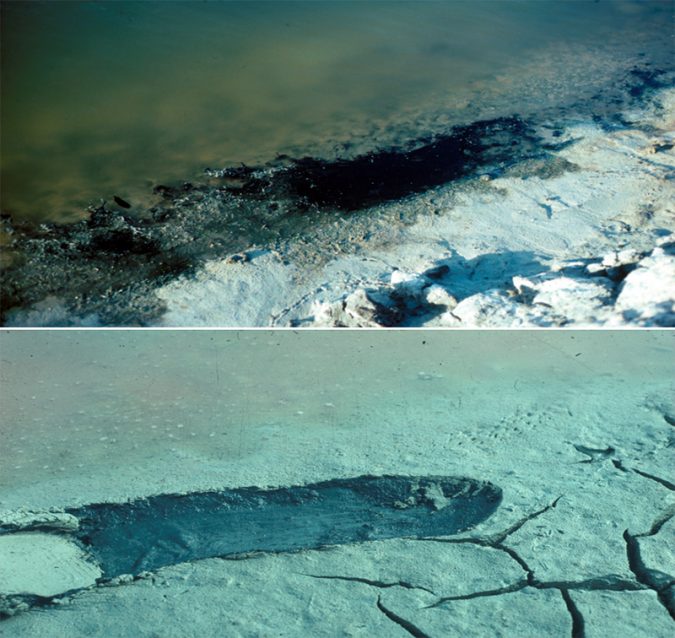
Redox measurement issues
The main problems associated with redox measurement is that the probe containing the redox electrode is rather large (about the diameter of a pencil), and when inserted into the sediment, oxygenated water from above the sediment enters around the probe affecting the redox potential. It also is virtually impossible to know the exact depth at which the probe is sensing redox, and redox can change drastically across 1 or 2 mm of depth. There also are calibration issues with redox probes, and many do not read 0.56 volt in oxygenated water. Nevertheless, it can be determined whether the redox potential is increasing or decreasing with such probes.
Low DO concentration can be detected easily with a polarographic DO meter, and low DO concentration alerts one of a low redox potential. Darkening of the sediment surface also indicates that redox is low enough for the presence of ferrous iron and too high for the presence of nitrate (the most highly oxidized form of nitrogen). The rotten egg odor of sulfide is detectable at a very low concentration of this substance – one does not have to measure redox to know if hydrogen sulfide is being produced.
Perspectives
The redox potential is not an easy or reliable technique for assessing the suitability of water quality for aquacultured animals. The practical aquaculturist should focus on maintaining adequate DO concentration in the water by balancing stocking and feeding rates with the amount of mechanical aeration applied. Positioning aerators to assure flow of oxygenated water across the pond bottom is helpful in preventing anaerobic conditions at the sediment-water interface. Some aquaculturists apply sodium nitrate to ponds as a sediment oxidant. The presence of nitrate in water to promote denitrification poises the redox potential at an acceptable level to avoid highly reduced substances such as hydrogen sulfide from entering the water column.
Author
-

Claude E. Boyd, Ph.D.
School of Fisheries, Aquaculture and Aquatic Sciences
Auburn University,
Auburn, AL 36830 USA[117,100,101,46,110,114,117,98,117,97,64,49,101,99,100,121,111,98]
Tagged With
Related Posts
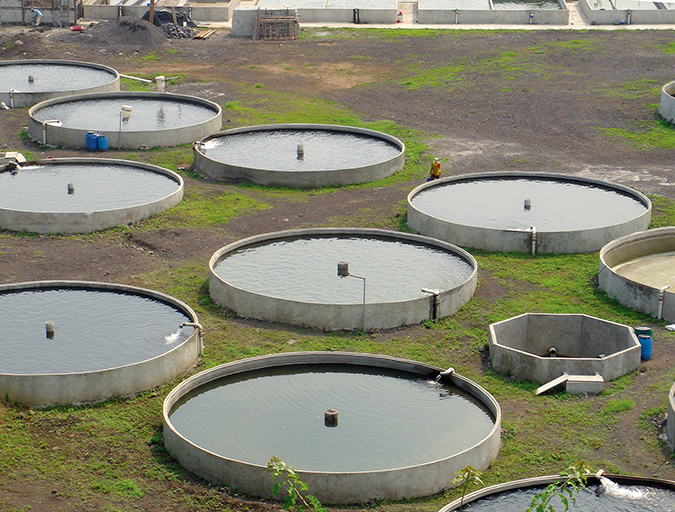
Responsibility
Calcium and magnesium use in aquaculture
Aquatic plants and animals get the essential nutrients calcium and magnesium from water and food. Calcium concentrations impact the hydration and development of eggs in a hatchery, where calcium carbonate precipitation can be troublesome.
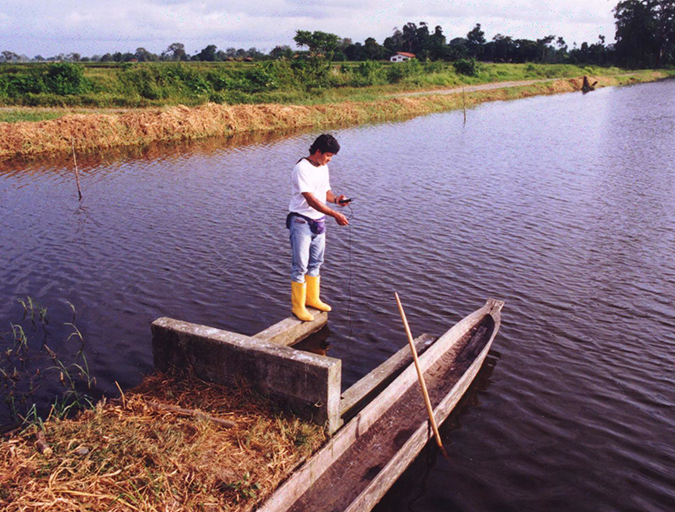
Responsibility
The importance of water analysis in aquaculture
Proper monitoring of water quality in aquaculture production systems is critical to enable appropriate and timely management decisions. It requires reliable equipment, trained technicians that follow instructions and apply quality control measures, proper reagents and calibrated equipment, and appropriately collected water samples that are promptly analyzed.
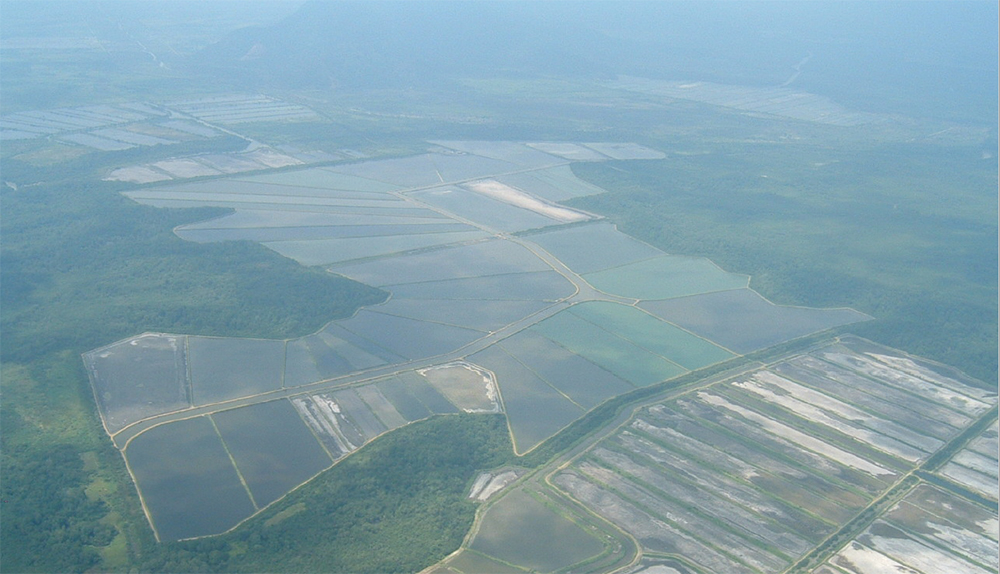
Health & Welfare
The importance of iron in aquaculture systems
Iron is the fourth most abundant element in the earth’s crust, but occurs at very low concentrations in surface waters and oceans. It is an essential element for many organisms as part of many enzymes, and also has an important role in plant photosynthesis.
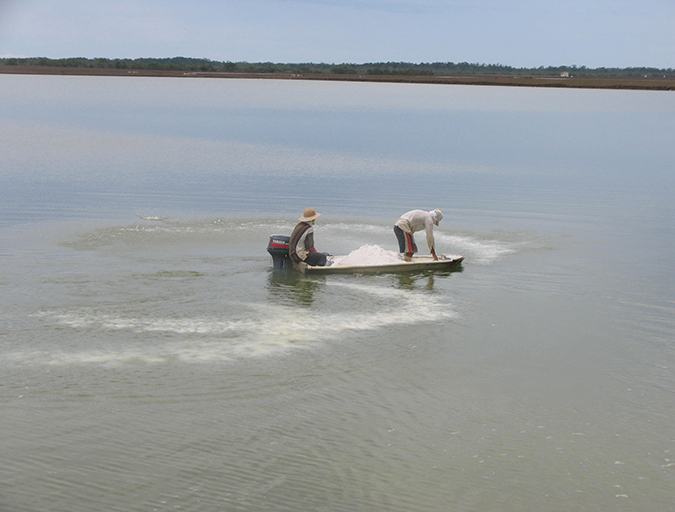
Responsibility
The importance of liming materials in aquaculture
Liming is an important management tool for preparing aquaculture ponds between and during production cycles. Several products are sometimes used in aquaculture for liming production ponds, including agricultural limestone, calcium silicate (CaSiO3) and sodium bicarbonate (NaHCO3).

